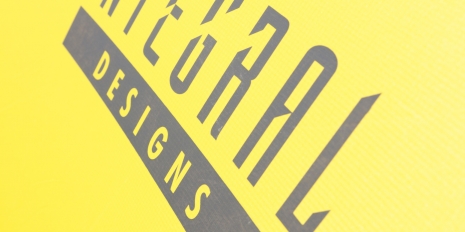
The following principles were laid out by Mat Nalder during his recent designer in residence week with us. We alwasy love mat's work and it is great having him in the studio again.
The outdoor industry has a rapid pace with tight lead times focused on seasonal releases and off shore production timelines. Design briefs are often verbal and the trap is that the objectives become moving targets with little qualification, validation or research to underpin the opportunity and build the design brief. It is critical for designers to build the brief and project guidelines, with clear targets and timelines if a project is going to succeed. It sounds simple and logical but it’s not often the case.
Do your research. Get market feedback, from sales and retail, manufacturing, design, web forums and the word in the field. This information needs to be analysed to:
From your research it’s important to define your categories for new equipment, for example if you are designing a tent is it for expedition, mountain, hybrid use, or lightweight applications. Then create basic placeholders (schematic product drawing) with basic targets and statistics e.g. Base > Mountain > Summit > Price Points. Then identify whether the product/s is a revision (redesign) on an existing model or design, or whether it’s a ground up new development. At this point it’s important to lock in the design intent and indicative range structure that will hit market, but allow room for some movement as the process if fluid.
Timelines are extremely short so it’s important that you make your material and colour selections early. It may take 12-13 months to design, manufacture, and ship and deliver new products to retailers ahead of a seasonal release. For example, for a northern hemisphere summer 2012 release, we needed 3 sets of samples by end of January > sales sample by April > final product by August > sign off in September > manufacture completed December > shipment in January > for product to arrive February.
To be effective get colour lab dips produced based on colour forecasting and your brand direction, and over lab dip early – i.e. if your chosen colour is green, get 8 different green lab dips as its safer than 1 or 2 because you will not have much time to re-dip if the 1 or 2 colours are actually what you wanted once you receive the lab dip samples. Select your colour from the lab dips and then get sign off. Some fabric lead time can be 90 days from order and there are often issues with delivery of new developmental fabrics.
Start with concept time. If it’s a redesign on an existing product, draw and frame up basic dimensions and create basic developmental specs (this can be a massive bottle neck in the process). Drip feed manufacturers to get them going and then visit the factory (1st Factory Visit) and review all samples and developments with a fine tooth comb. Assess designs and manufacturing difficulties, direction and targets. Comment on each in person with manufacturer and create an excel comments doc (so this can be translated) and create a visual comment document with all aspects market up on photographs so it is very visual.
At this point you really need the designs to be 75% complete and indicative pricing established.
Revise range plan and products by culling out any SKU’s if required. At this point you need to create the second set of prototype specifications (revision 2 to your initial specs) with increased detail and all major aspects specified. Get factory to send you counter samples (second set of samples from your revisited prototype specifications) and review and assess. If required, create comment documents.
At this point you need the designs to be 85% complete so you can supply marketing with written and illustrative media to initiate marketing development activities.
Create detailed sales sample specifications. Introduce branding and labeling with the correct fabrics, colours and component. Create user manuals and instruction. At this point it’s important to mention that the idea is to get all of the key points of difference and product benefits labeled on the product as this can significantly improve the sales process at retail, because the retailer can walk a potential customer over to the product and then give them an outline of why they need it almost by reading off the label. This reduces the requirement for sales staff to themselves understand the technical aspects of the product.
At this point sales presentations need to occur. Present the clean and clear product packages to your sales teams for sell-in. This is generally a point for information overload during sales releases. Price points are presented but will still need flexibility.
The design at this point needs to be 95% complete.
Create final pre-production specs that are extremely detailed, with correct detailing, colouring, fabrics, and componentry and labeling. Issue pre-production specs to manufacture for pre-production sampling.
Review all pre-production samples and comment on any final amendments or changes that need to be made. Issue final design sign off for production, and supply marketing teams with final information. To prevent issues visit manufacturer to check and QC final products during manufacture.
To contact mat visit www.matnalder.com or email him at mat@matnalder.com
Comments
Post new comment